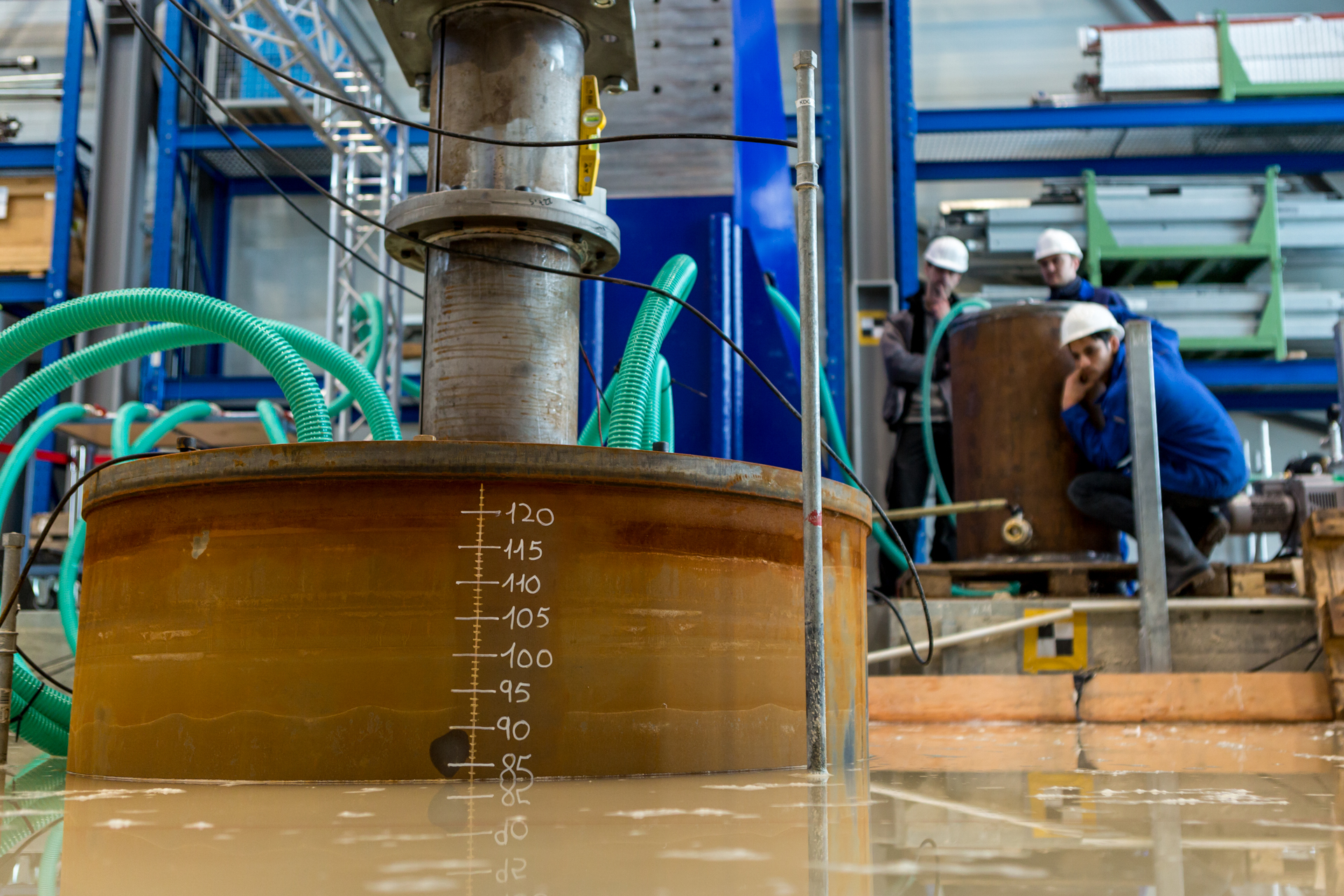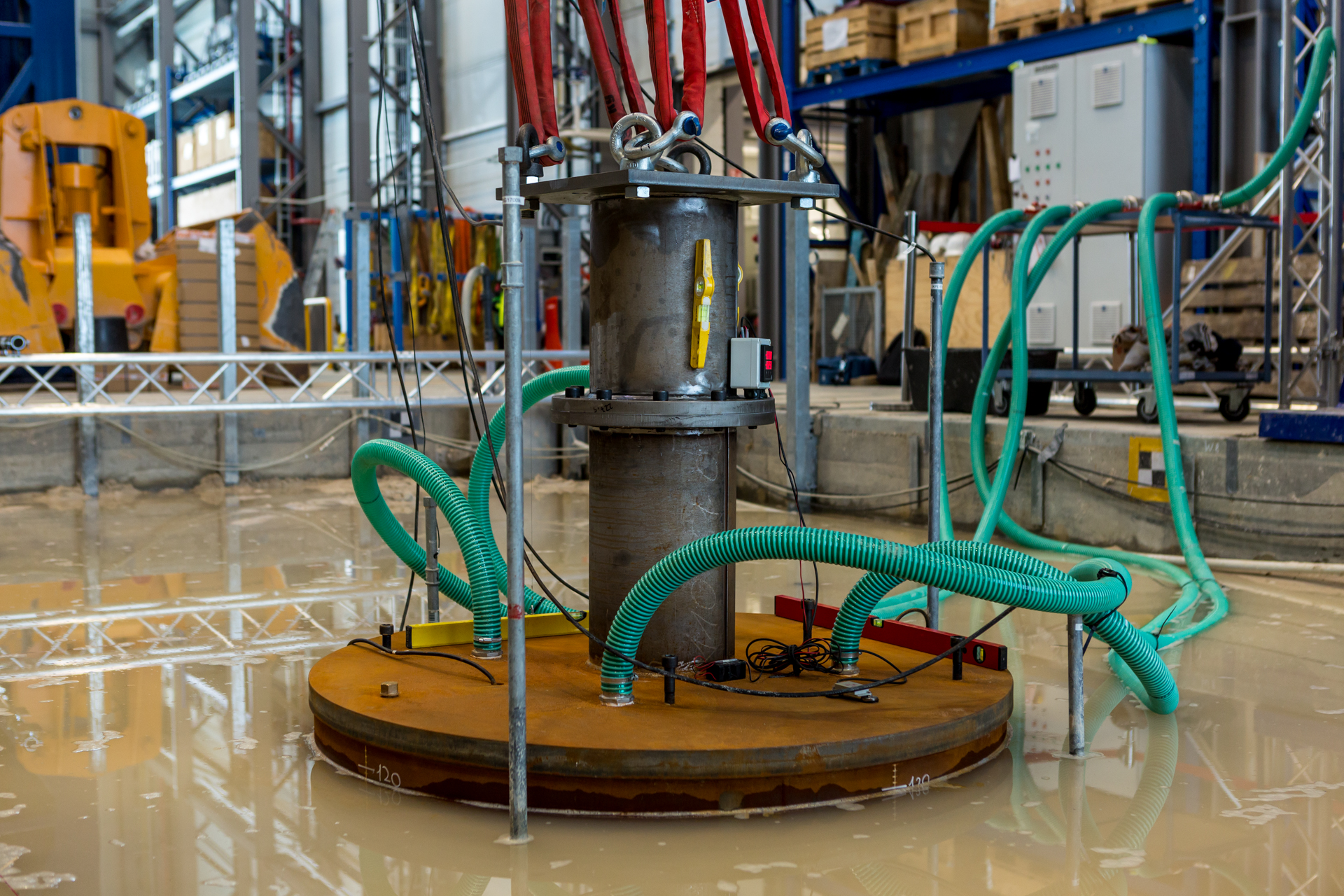Demo Project for Suction Bucket Foundations
Within an hour, the steel cylinder of the bucket foundation had sunk down into the soil. This installation method for the foundations of offshore wind turbines is both fast and avoids pile driving noise, meaning it can also be employed for sites in regions subject to noise restrictions. The technique consists in the pumping of water out of sealed steel containers (“buckets”) in order to build up a negative pressure, which draws the structure into the seabed. The challenging aspects of a bucket installation include the distribution of the pressure as well as ensuring that the bucket remains level. Following successful installation, the researchers are now investigating the tensile behavior of suction buckets and the effects of extreme wave loads.
A stable position even in cases of extreme weather conditions is an absolute must for wind turbines in offshore farms. As such, not only the influence of the installation process on the subsequent stable position but also the interaction between the seabed and the steel structure, the effects of compressive and, above all, tensile loads are investigated in advance. The bucket foundation included in the research represents a Bucket for a jacket support structure and measures 1.4 meters in diameter. In offshore applications, the same components can reach diameters of between 6 and 15 meters. Large-scale model tests such as these are performed by Fraunhofer researchers in the Test Center for Support Structures – a facility owned by the Leibniz Universität Hannover – in the foundation test pit measuring 14 x 9 x 10 meters. The foundation test pit provides homogeneous testing conditions and a sandy model seabed representative of those typically found in the North Sea.
The steel construction is referred to as a “suction bucket” because it is “suctioned” into the seabed through the build-up of a negative pressure. The environmentally friendly installation process of these structures does not generate any pile driving noise, is completely reversible, and has the advantage that no heavy installation equipment needs to be deployed offshore. The comparatively rapid installation is a further advantage: a prepared support structure with buckets can be installed in a single day. The demonstration project will help the IWES researchers to expand their expertise in the field even further: the experiences gathered will be made available to industry partners in the scope of research projects.
During the installation process, the steel cylinder was sunk just over a meter into the saturated sand. “It is extremely important to monitor the negative pressure closely so as to avoid damaging the seabed and ensure the bucket remains level. For this reason, separate chambers are employed in the bucket during offshore installations, with the aim of regulating the pressure,” said IWES Project Manager Tulio Quiroz.
Once the bucket has been in position for a few days, the tensile load tests will begin, which will be used to simulate the effects of extreme waves on the structure in the foundation test pit.
Last modified:


